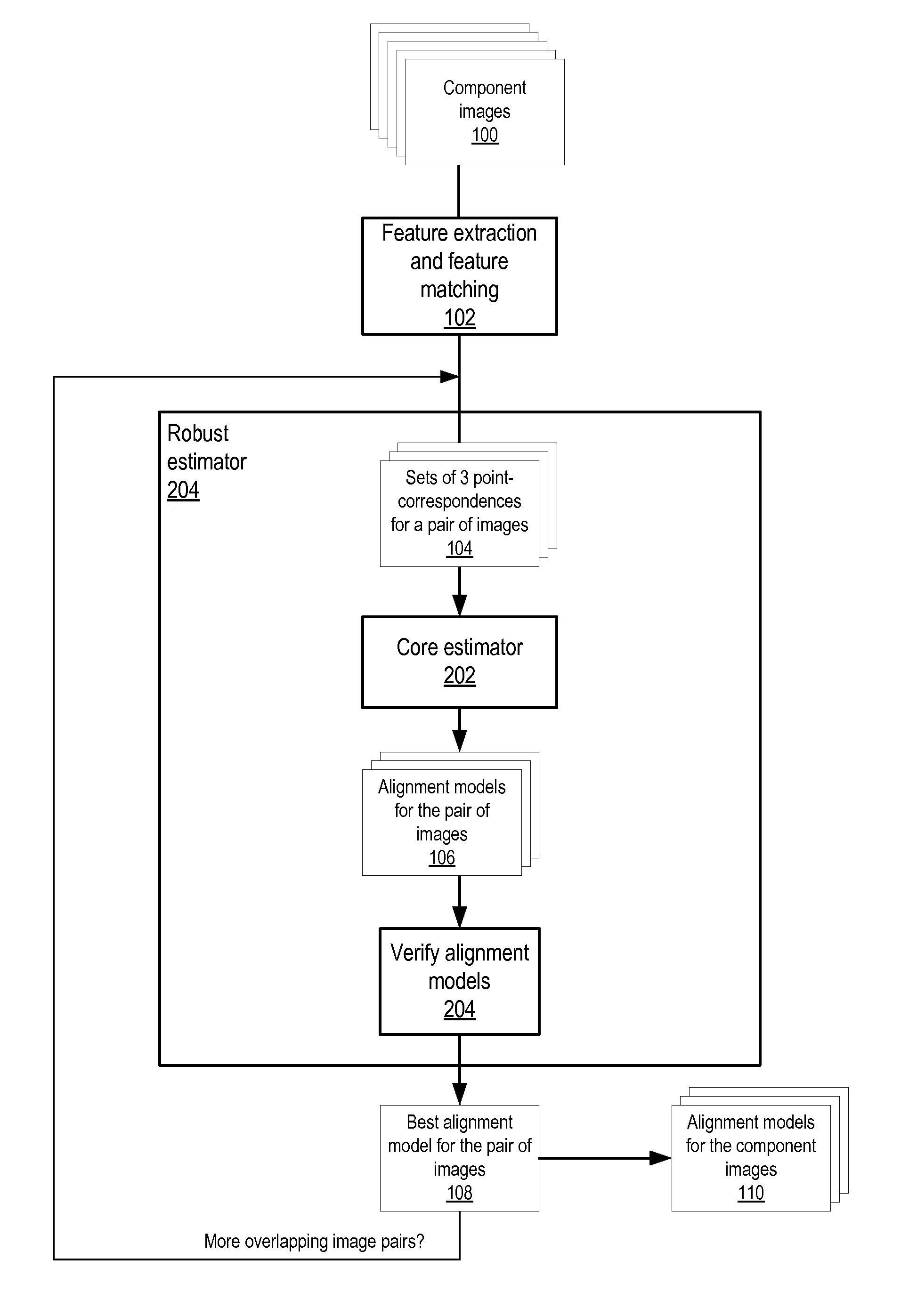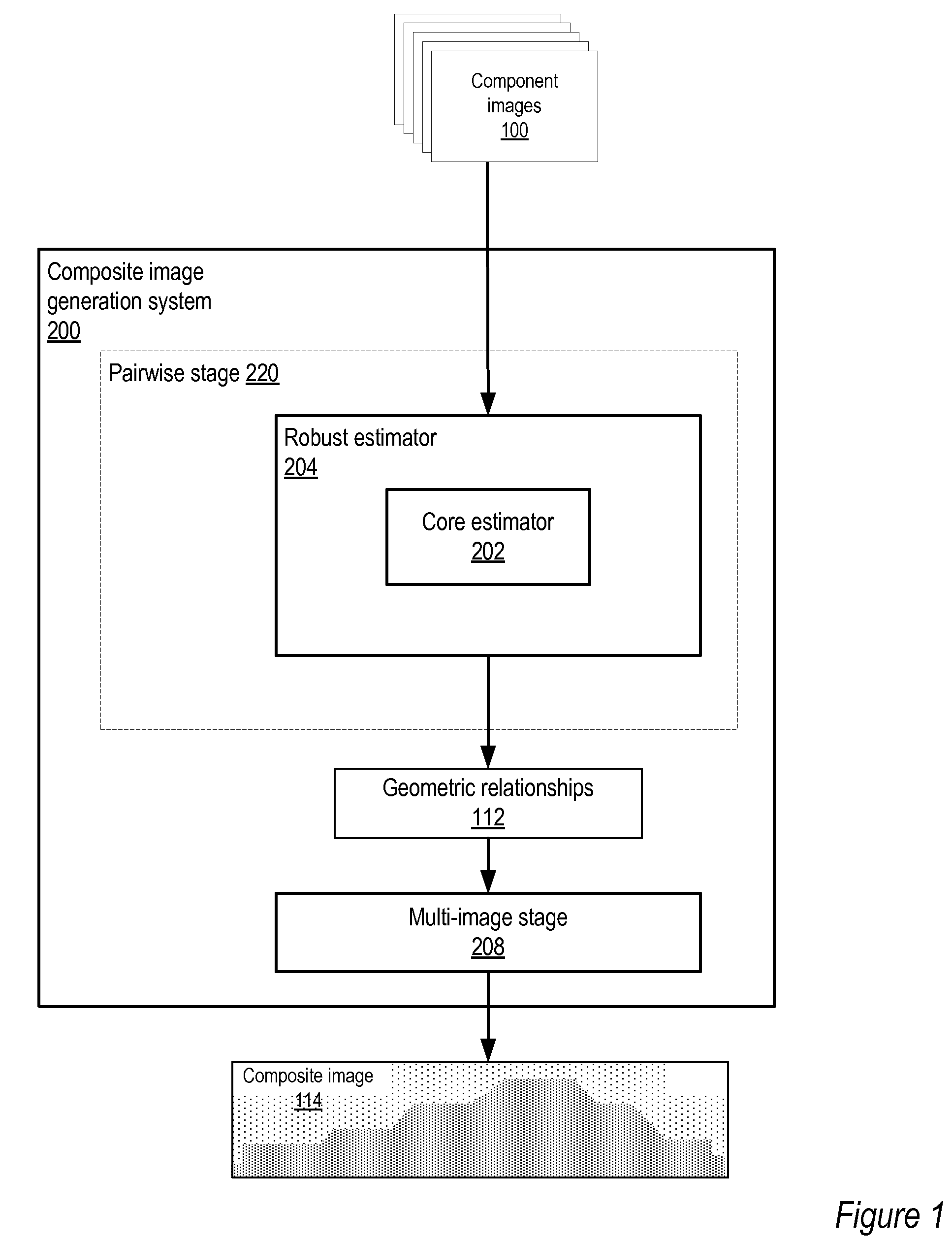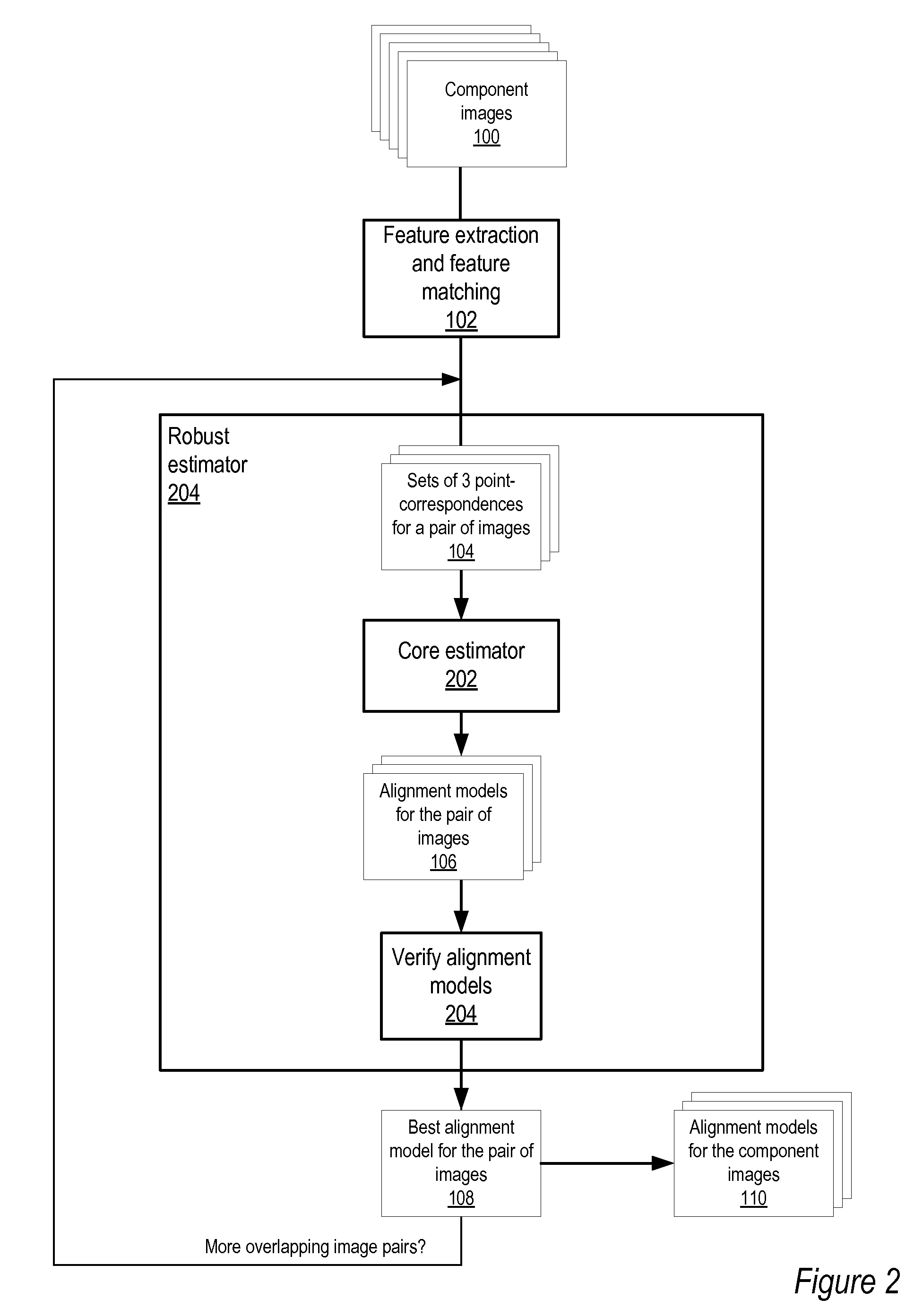Method and apparatus for estimating rotation, focal lengths and radial distortion in panoramic image stitching
a panoramic image and focal length technology, applied in the field of computer systems, can solve the problems of limiting the field of view of the camera to be increased without compromising quality, the scene or view may be too large to capture as one image, and the capture of more complex composite images may be difficul
- Summary
- Abstract
- Description
- Claims
- Application Information
AI Technical Summary
Benefits of technology
Problems solved by technology
Method used
Image
Examples
Embodiment Construction
[0030]Various embodiments of a method and apparatus for estimating relative three-dimensional (3D) camera rotations, focal lengths, and radial (lens) distortions from point-correspondences in pairwise (two image) image alignment are described. Embodiments may provide a core estimator that takes a minimal (three) number of point-correspondences and returns a rotation, lens (radial) distortion and two focal lengths (one for each image). Embodiments may include a robust estimator or hypothesis testing framework may be based on or may be “wrapped around” the core estimator to handle noise and errors in point-correspondences. Embodiments may be implemented in composite image generation systems used to generate composite images from sets of input component images.
[0031]Using three points may significantly reduce the number of trials needed by a robust estimator such as the RANSAC (RANdom SAmple Consensus) algorithm. Embodiments may estimate camera rotations, focal lengths and lens distort...
PUM
 Login to View More
Login to View More Abstract
Description
Claims
Application Information
 Login to View More
Login to View More - R&D
- Intellectual Property
- Life Sciences
- Materials
- Tech Scout
- Unparalleled Data Quality
- Higher Quality Content
- 60% Fewer Hallucinations
Browse by: Latest US Patents, China's latest patents, Technical Efficacy Thesaurus, Application Domain, Technology Topic, Popular Technical Reports.
© 2025 PatSnap. All rights reserved.Legal|Privacy policy|Modern Slavery Act Transparency Statement|Sitemap|About US| Contact US: help@patsnap.com



